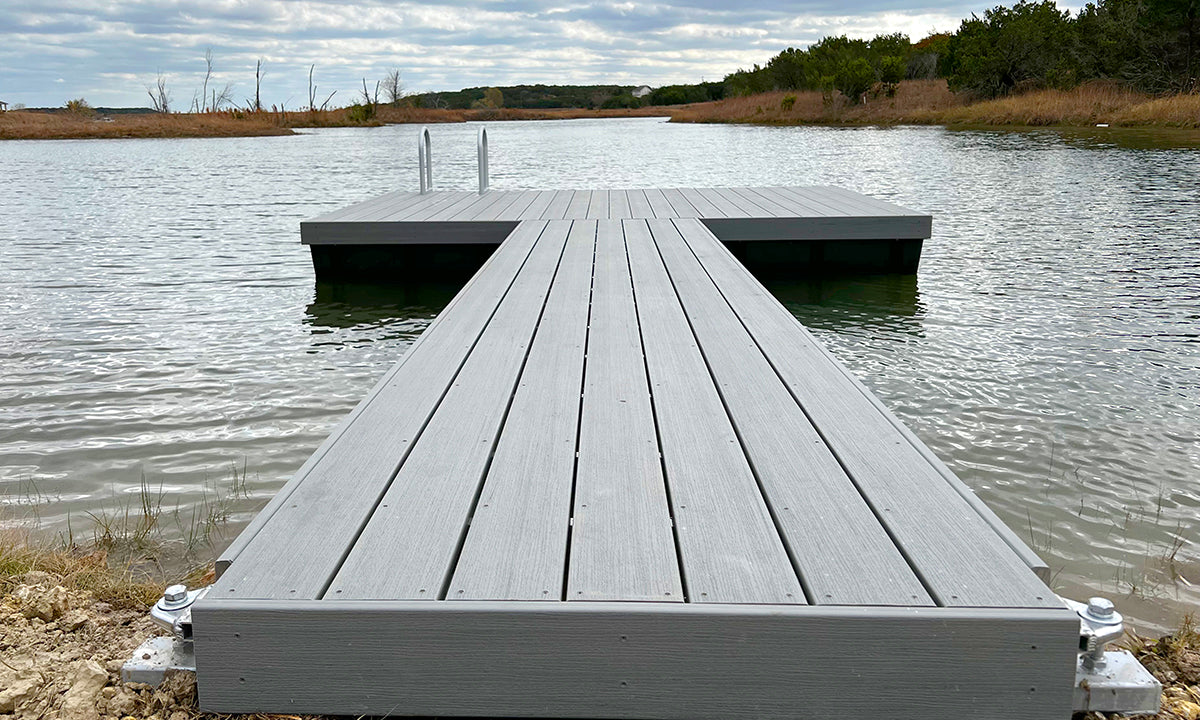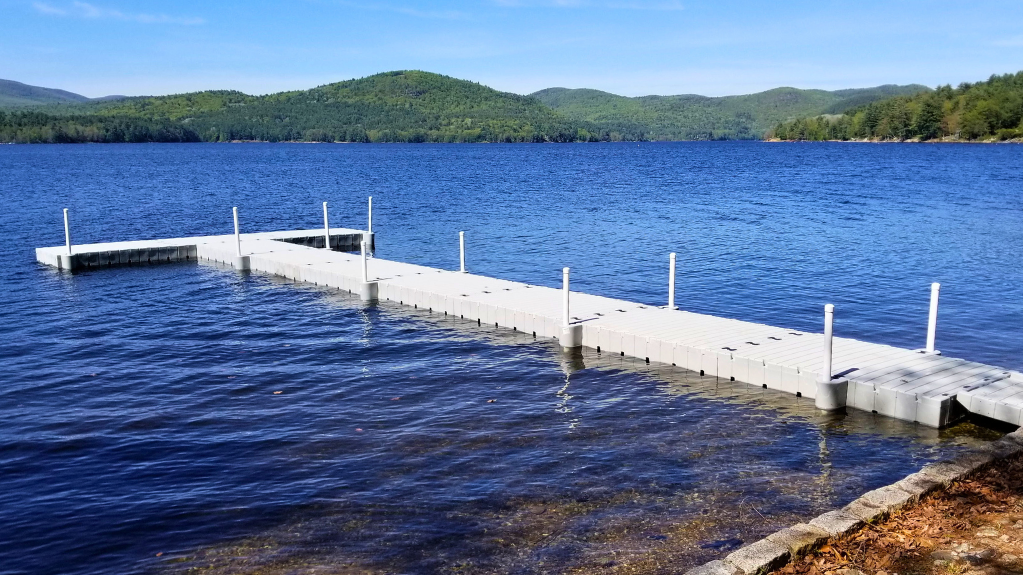Crafting Custom Solutions: Why a Floating Dock Builder is Vital for Unique Needs
Crafting Custom Solutions: Why a Floating Dock Builder is Vital for Unique Needs
Blog Article
Upgrade Your Waterfront With Long Lasting Floating Docks
Updating your waterside with durable floating docks can dramatically boost both performance and aesthetics, supplying a functional remedy for different water activities. These frameworks are developed to adapt to rising and falling water levels, guaranteeing safety and security and access throughout the periods. With a variety of products readily available, consisting of low-maintenance options and conventional wood, selecting the ideal dock can enhance your individual design and satisfy practical requirements. Comprehending the subtleties of installation and maintenance is critical for guaranteeing durability and performance. When making this financial investment?, what factors should you think about.
Advantages of Floating Docks
Floating docks offer a wide range of advantages that improve their allure for different maritime applications. Unlike traditional set docks, floating docks rise and fall with the trend, making certain constant accessibility for watercrafts and watercraft no matter of environmental problems.
Additionally, floating docks are easier to mount and move, giving versatility for short-lived or seasonal usage. Their modular layout enables modification to fit particular demands, whether for exclusive marinas, property waterfronts, or business applications.
In addition, floating docks produce marginal disturbance to the water setting, protecting neighborhood environments and minimizing the possibility of disintegration. They additionally provide enhanced security and security for users, as their resilient nature supplies a more forgiving surface than stiff frameworks.
In addition, floating docks can facilitate a varied array of tasks, such as angling, swimming, and recreational boating, making them an important possession for waterside growth. Their versatility and practicality make floating docks a preferred choice for a variety of marine jobs.
Selecting the Right Materials
Choosing suitable materials for floating docks is important to their durability, performance, and general efficiency. When selecting materials, think about variables such as environmental direct exposure, upkeep demands, and architectural honesty. Usual products include wood, plastic, aluminum, and composite options, each offering distinctive benefits and disadvantages.
Timber, while aesthetically pleasing, requires normal upkeep to stop rot and decay. Pressure-treated timber can boost sturdiness, however it may still succumb to water damage gradually. Plastic floats, often made from high-density polyethylene, are immune to deterioration and call for minimal upkeep, making them an appealing option for low-maintenance applications.
Light weight aluminum is one more feasible option, understood for its strength and light-weight properties. It is immune to corrosion and can withstand rough climate condition, although it might be a lot more pricey than other products. Composite products integrate the finest qualities of timber and plastic, offering a low-maintenance and resilient choice that imitates the appearance of timber without the linked downsides.
Inevitably, the option of product must straighten with the meant usage, environmental factors to consider, and budget restrictions, guaranteeing a functional and long lasting floating dock that satisfies your specific demands.
Installation Refine Introduction
The effective installation of a floating dock counts on careful preparation and implementation, making sure that it operates successfully in its intended setting. The very first step includes assessing website conditions, consisting of water depth, coastline functions, and dominating climate patterns, which will certainly notify the dock design and anchoring dig this system.
Complying with the website analysis, the next phase is to prepare the floating dock elements. This consists of constructing the structure, securing floats, and connecting any type of necessary hardware. It is crucial to ensure that all links are durable and waterproof to endure marine problems.
As soon as the dock is set up, the installation process starts with positioning the dock in the water. This can entail a crane or various other lifting devices, specifically for bigger frameworks. Appropriate positioning is necessary for functionality and safety and security.

Upkeep Tips for Long Life
Routine maintenance is vital for ensuring the long life and optimum performance of a drifting dock. To accomplish this, begin with regular evaluations a minimum of two times a year, concentrating on the honesty of the dock's framework, consisting of the flotation protection devices and connecting hardware. Look for indicators of damages, deterioration, or wear, and resolve any problems promptly to stop additional deterioration.
Cleansing is one more important facet of maintenance. Eliminate debris, algae, and barnacles browse around these guys from the dock's surface area to prevent unsafe problems and keep visual appeal. Use a light detergent and a soft brush to stay clear of harming the dock's products.
Additionally, make sure that the dock is appropriately secured and safeguarded to withstand seasonal changes in water levels and weather. Inspect the anchoring system for security and make modifications as essential.
Enhancing Your Outdoor Aesthetic
To develop a visually appealing outdoor space, incorporating a floating dock can considerably improve the general aesthetic of your waterfront building. Floating docks are not just practical but can also serve as a striking prime focus that enhances the natural environments - floating dock builder. Offered in various materials and designs, these docks can be tailored to match your residential property's architectural design and landscape
The addition of decorative components, such as integrated lights or elegant barriers, even more boosts the dock's visual allure. Think about using all-natural wood finishes, this website which blend seamlessly with the setting, or choosing modern-day materials like light weight aluminum or composite outdoor decking that provide a sleek, modern appearance.
Strategically placing planters or seating areas on or around the dock can create inviting rooms that motivate relaxation and pleasure of waterfront sights. Additionally, including colors and appearances that balance with your landscape will certainly develop a natural visual throughout your outside area.

Conclusion

Upgrading your beachfront with resilient floating docks can significantly improve both capability and looks, providing a flexible option for various water activities. Unlike standard set docks, floating docks increase and loss with the tide, making certain constant availability for watercrafts and watercraft regardless of environmental conditions.Choosing ideal materials for floating docks is important to their durability, efficiency, and total performance.As soon as the dock is put together, the installment procedure commences with positioning the dock in the water.In summary, floating docks offer various advantages, including versatility to water degree modifications and a selection of product alternatives.
Report this page